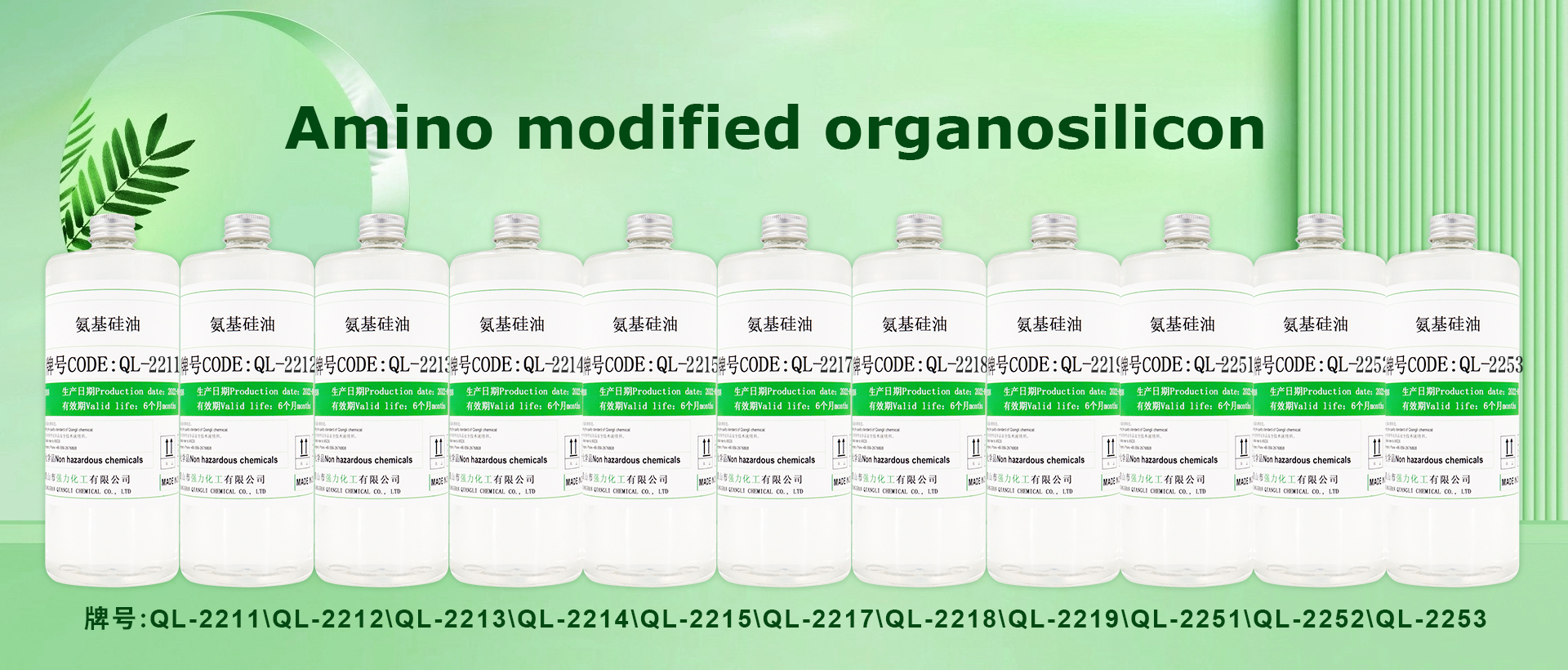When amino silicone oil is emulsified, the emulsion is stable, but after diluting with water, it becomes uneven, with flocs and the original oil precipitating. The following is an analysis of the specific causes and principles:
I. Imbalance of Emulsifier Concentration and Stability
1. Insufficient emulsifier coverage due to dilution
- Principle: Emulsifiers need to form an adequate interfacial film to wrap silicone oil particles in the emulsion, maintaining stable steric hindrance or charge repulsion. When diluted with water, the emulsifier concentration decreases. If the original dosage is close to the critical value, the diluted emulsifier may fail to completely cover the surface of silicone oil particles, causing particles to collide and aggregate, forming flocs.
- Example: If the ratio of emulsifier to silicone oil in the original emulsion is 1:5, it may drop to 1:10 after dilution, destroying the integrity of the interfacial film.
2. Mismatch between emulsifier type and HLB value
- Principle: Emulsification of amino silicone oil requires an emulsifier with a specific HLB (Hydrophile-Lipophile Balance) value. The HLB value of the system may shift after dilution, reducing the emulsifier's affinity for silicone oil and causing demulsification.
- Typical scenario: Non-ionic emulsifiers (such as polyoxyethylene ethers) may weaken hydrophilicity near the cloud point due to temperature changes after dilution, leading to silicone oil precipitation.
II. Influence of pH Change on Amino Group Ionization
1. pH sensitivity of amino silicone oil
-
Principle: Amino groups (-NH₂, -NH-) in amino silicone oil ionize differently with pH:
- Under alkaline conditions (pH > 7): Amino groups exist in free form, and particle surfaces carry negative charges, maintaining stability through electrostatic repulsion;
- Under acidic conditions (pH < 7): Amino groups are protonated (-NH₃⁺), and the surface carries positive charges. If the diluting water is acidic, it may neutralize the charge of anionic emulsifiers, destroying the double electric layer stability.
- Case: If the original emulsion has a pH of 8 (stable) and the diluting water has a pH of 5, the pH of the mixed system decreases, amino groups are protonated, and the electrostatic repulsion between particles weakens, leading to aggregation.
2. Insufficient buffering capacity
- If the original emulsion does not contain a buffer, the pH is prone to fluctuate beyond the stable range after dilution, especially when amino silicone oil itself has weak buffering capacity.
III. Effects of Electrolytes and Water Quality
1. Diluting water contains electrolytes (such as calcium and magnesium ions)
- Principle: Electrolytes (such as Ca²⁺, Mg²⁺, Na⁺) in water can neutralize the charge of emulsifiers (such as carboxyl and sulfonate groups of anionic emulsifiers), compress the thickness of the double electric layer, and weaken the electrostatic repulsion between particles, leading to flocculation.
- Phenomenon: Dilution with tap water (containing minerals) is more likely to produce flocs than with deionized water.
2. Hard water inactivates emulsifiers
- Anionic emulsifiers (such as sodium dodecylbenzene sulfonate) easily form insoluble salts with metal ions in hard water, reducing the effective concentration of emulsifiers and destroying emulsion stability.
IV. Thermodynamic and Kinetic Stability Issues
1. Uneven stirring during dilution
- Principle: If water is added too quickly or stirring is insufficient during dilution, the local emulsifier concentration drops sharply. Silicone oil particles aggregate in high-concentration areas and are difficult to redisperse, forming visible flocs.
- Recommendation: The correct operation should be to slowly add the emulsion to water while stirring vigorously (to avoid local concentration imbalance).
2. Temperature change affects compatibility
- If the water temperature differs significantly from the original emulsion temperature (such as a temperature difference > 10°C) during dilution, it may cause changes in emulsifier solubility (such as near the cloud point of non-ionic emulsifiers) or fluctuations in silicone oil viscosity, destroying the thermodynamic stability.
V. Influence of Amino Silicone Oil Itself
1. Excessively high amino content and molecular weight
- Principle: Silicone oil with high amino content (such as amine value > 0.6 meq/g) has strong intermolecular hydrogen bonding, and is more prone to cross-linking and aggregation through amino groups after dilution; high-molecular-weight silicone oil has high viscosity, and the attractive force between particles after emulsification is strong, making the stability more likely to be destroyed after dilution.
- Performance: Under the same conditions, emulsions of silicone oil with high amino content are more prone to oil droplet precipitation after dilution.
2. Residual monomers or impurities from the synthesis process
- If unreacted monomers or oligomers remain in the amino silicone oil synthesis process, they may precipitate due to changes in solubility after dilution, exacerbating floc formation.
VI. Solutions and Optimization Directions
| Problem Type | Solutions |
|---|---|
| Insufficient emulsifier concentration |
- Increase the emulsifier dosage in the original emulsion or supplement a small amount of emulsifier during dilution (needs to match the type); - Use compound emulsifiers (such as non-ionic + anionic) to enhance the interfacial film strength. |
| pH fluctuation |
- Adjust the pH of diluting water to the range matching the original emulsion (usually pH 7-9 is suitable for amino silicone oil emulsion); - Add phosphate buffers (such as sodium dihydrogen phosphate) to stabilize the system pH. |
| Electrolyte influence |
- Use deionized water or distilled water for dilution; - If tap water must be used, add a chelating agent (such as EDTA) to complex metal ions first. |
| Inappropriate emulsifier type |
- Rescreen emulsifiers, for example: ✓ Select non-ionic emulsifiers with polyether chains (such as PEG-10 dimethicone) for high amino silicone oil; ✓ Combine cationic emulsifiers (such as quaternary ammonium salts) to neutralize the positive charge of amino groups. |
| Operation process optimization |
- Adopt the dilution sequence of "emulsion → water", adding while stirring (rotation speed ≥ 2000 rpm); - Control the temperature difference between the diluting water and the original emulsion to < 5°C. |
VII. Experimental Troubleshooting Suggestions
- Single-factor verification: Dilute with deionized water, pH-adjusted water, and water added with chelating agent respectively, observe the differences in phenomena, and locate the main influencing factors.
- Emulsifier ratio test: Prepare emulsions with different emulsifier dosages (such as 1.2 times and 1.5 times the original dosage), and compare stability after dilution.
- Particle size analysis: Detect the particle size distribution of the emulsion before and after dilution by a laser particle size analyzer. If the particle size increases significantly, it indicates particle aggregation.
Through the above analysis, the root cause of instability after dilution can be gradually identified, and the process or formula can be adjusted targetedly to improve the dilution stability of amino silicone oil emulsion.




